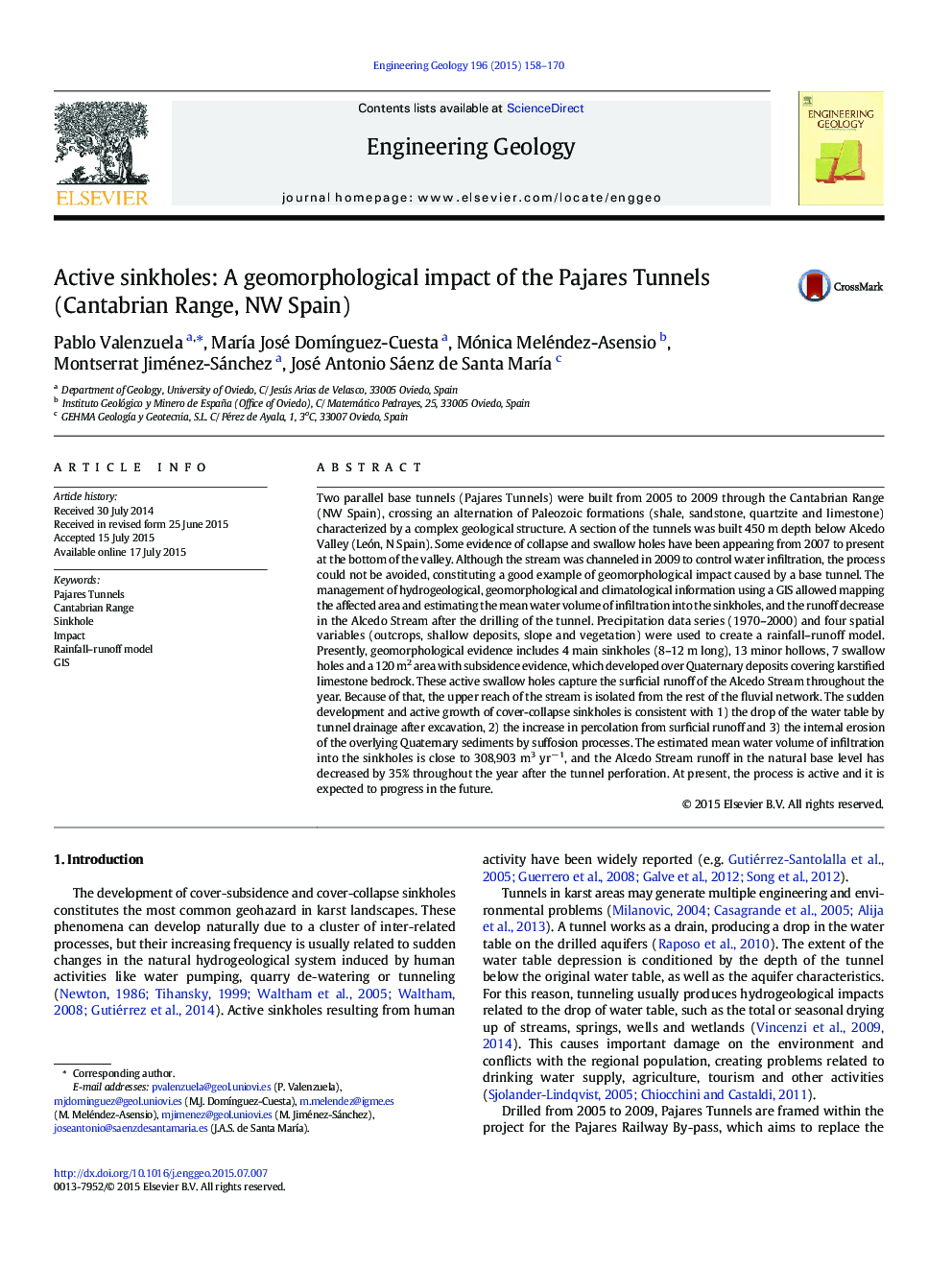| Article ID | Journal | Published Year | Pages | File Type |
|---|---|---|---|---|
| 4743354 | Engineering Geology | 2015 | 13 Pages |
•Pajares Tunnels (25 km-long and 9–1100 m-deep) cause geomorphological impacts.•Seventeen sinkholes are mapped in the Alcedo Valley (Cantabrian Range, Spain).•Seven active swallow holes capture the Alcedo Stream runoff throughout the year.•A rainfall–runoff model was performed by using GIS.•Water flow infiltration into the sinkholes was estimated in 308,903 m3 yr− 1.
Two parallel base tunnels (Pajares Tunnels) were built from 2005 to 2009 through the Cantabrian Range (NW Spain), crossing an alternation of Paleozoic formations (shale, sandstone, quartzite and limestone) characterized by a complex geological structure. A section of the tunnels was built 450 m depth below Alcedo Valley (León, N Spain). Some evidence of collapse and swallow holes have been appearing from 2007 to present at the bottom of the valley. Although the stream was channeled in 2009 to control water infiltration, the process could not be avoided, constituting a good example of geomorphological impact caused by a base tunnel. The management of hydrogeological, geomorphological and climatological information using a GIS allowed mapping the affected area and estimating the mean water volume of infiltration into the sinkholes, and the runoff decrease in the Alcedo Stream after the drilling of the tunnel. Precipitation data series (1970–2000) and four spatial variables (outcrops, shallow deposits, slope and vegetation) were used to create a rainfall–runoff model. Presently, geomorphological evidence includes 4 main sinkholes (8–12 m long), 13 minor hollows, 7 swallow holes and a 120 m2 area with subsidence evidence, which developed over Quaternary deposits covering karstified limestone bedrock. These active swallow holes capture the surficial runoff of the Alcedo Stream throughout the year. Because of that, the upper reach of the stream is isolated from the rest of the fluvial network. The sudden development and active growth of cover-collapse sinkholes is consistent with 1) the drop of the water table by tunnel drainage after excavation, 2) the increase in percolation from surficial runoff and 3) the internal erosion of the overlying Quaternary sediments by suffosion processes. The estimated mean water volume of infiltration into the sinkholes is close to 308,903 m3 yr− 1, and the Alcedo Stream runoff in the natural base level has decreased by 35% throughout the year after the tunnel perforation. At present, the process is active and it is expected to progress in the future.
